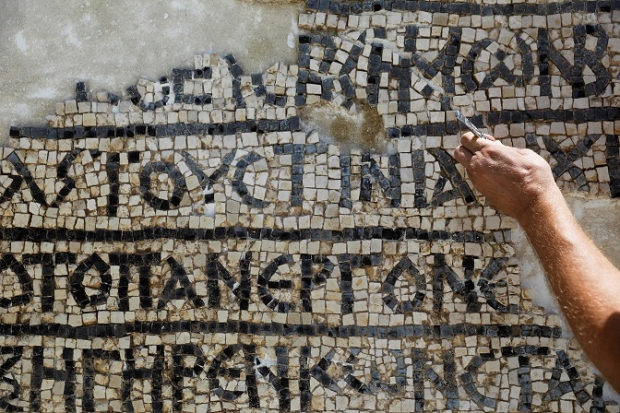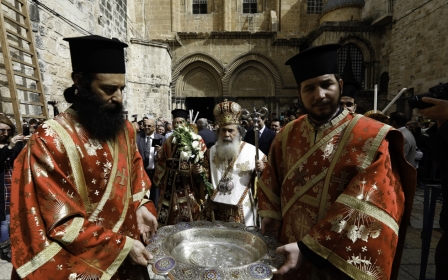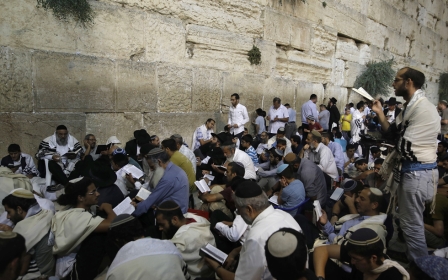Archaeologists uncover rare 1,500-year-old mosaic in Jerusalem

A 1,500-year-old mosaic floor with a Greek inscription has been uncovered during work to install communications cables in Jerusalem's Old City – a rare discovery of an ancient Christian relic and an historic document in one.
The inscription cites 6th-century Roman emperor Justinian as well as Constantine, who served as abbot of a church founded by Justinian in Jerusalem. Archaeologists believe it will help them to understand Justinian's building projects in the city.
The Greek inscription was deciphered by Dr Leah Di Segni, an expert on ancient Greek inscriptions at the Hebrew University of Jerusalem.
The full inscription reads: "The most pious Roman emperor Flavius Justinian and the most God-loving priest and abbot, Constantine, erected the building in which [this mosaic] sat during the 14th indiction."
Indiction is an ancient method of counting years that was used for taxation purposes. Archaeologists said the inscription suggests the mosaic dated to the year 550/551 CE.
The mosaic, discovered near Damascus Gate in Jerusalem's Old City, was displayed at the Rockefeller Museum in Jerusalem on 23 August.
Justinian was one of the most important rulers of the Byzantine era. In 543 CE he established the Nea Church in Jerusalem, one of the biggest Christian churches in the eastern Roman Empire and the largest in Jerusalem at the time.
According to David Gellman, director of the excavation on behalf of the Israel Antiquities Authority, the mosaic reveals the significance of Jerusalem in the empire’s history.
"The fact that the inscription survived is an archaeological miracle," David Gellman said in a statement.
"Every archaeologist dreams of finding an inscription in their excavations, especially one so well preserved and almost entirely intact."
Researchers believe that the building of which the mosaic was once part, beside the Old City's Damascus Gate, was used as a hostel for pilgrims.
A similar mosaic was found in the 1970s during excavations of the Old City under the remains of the Nea Church, or new church, also founded by Justinian, in 543 CE. The church, dedicated to Jesus’s mother Mary, was a jewel of the Byzantine Empire.
The mosaic, which was unveiled to the media on Wednesday, was discovered earlier this summer. Conservation experts have removed the mosaic and are treating it in a specialist workshop.
Uncovering this mosaic, said Gellman, is, “so far, the height of my career".
Middle East Eye propose une couverture et une analyse indépendantes et incomparables du Moyen-Orient, de l’Afrique du Nord et d’autres régions du monde. Pour en savoir plus sur la reprise de ce contenu et les frais qui s’appliquent, veuillez remplir ce formulaire [en anglais]. Pour en savoir plus sur MEE, cliquez ici [en anglais].





